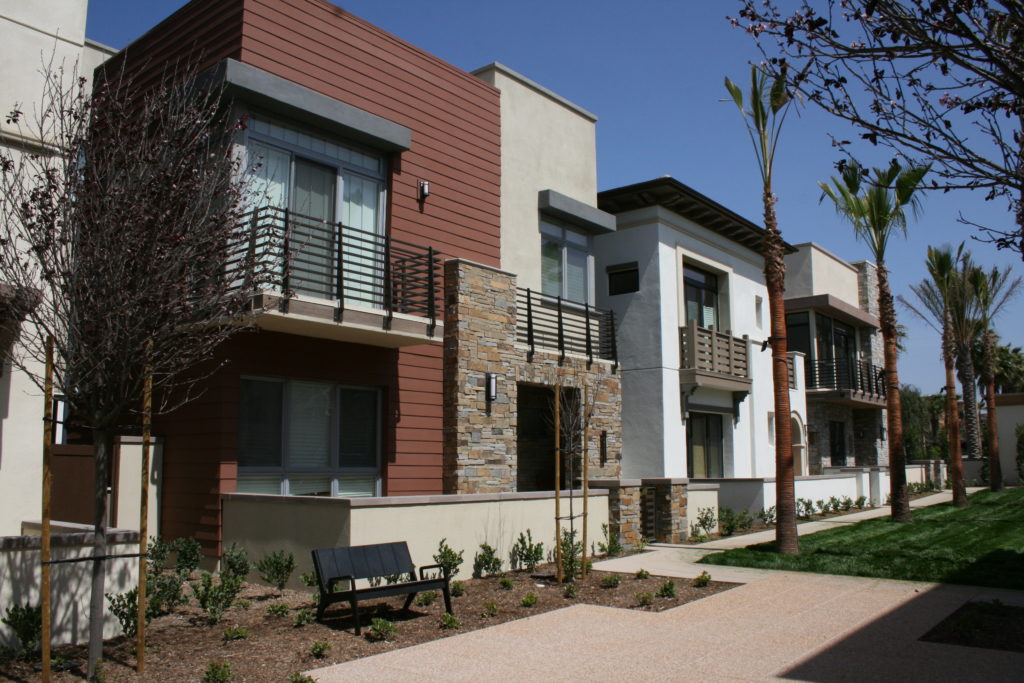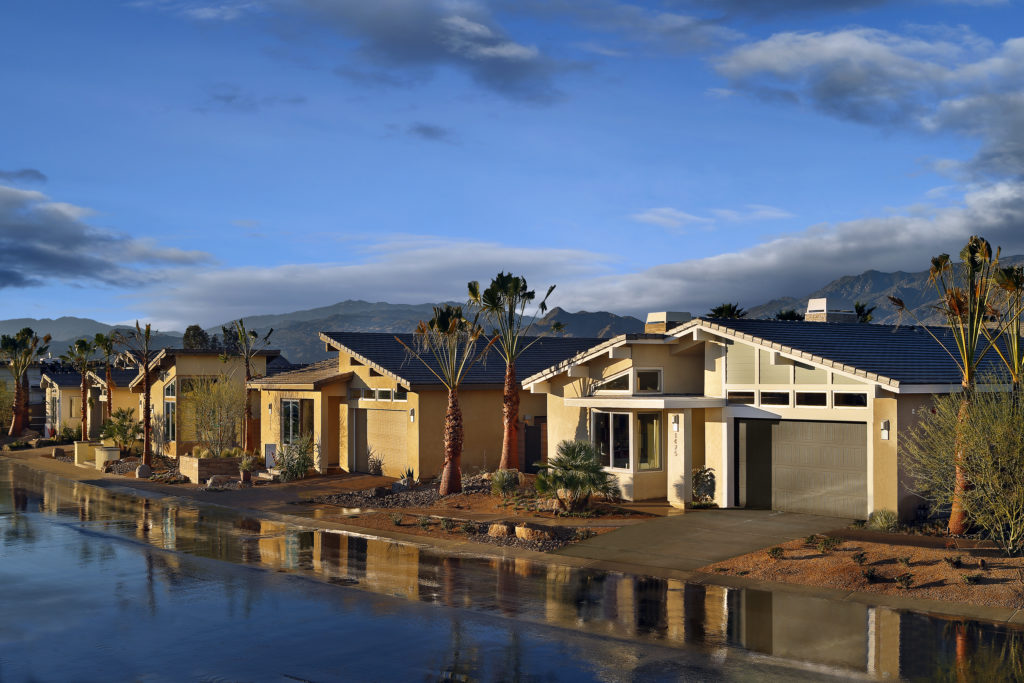To keep architecture fresh and exciting, designers search for new ways to use color and materials to help shape and complete the look of their designs. Although some overlook these details and deem them an afterthought, color and materials can make or break the integrity of the overall design concept.
Home elevations with a more contemporary character must use of color and materials that are contemporary as well. Details make all the difference in executing appropriate contemporary exteriors in residential communities. Designing a unified building with a visual identity that sparks interest can be accomplished in this architectural style with a few key points to guide the process:
- Choose contemporary colors and materials that reflect architectural character and are appropriate to the specific locale.
- Mix colors and materials in a harmonious and thoughtful way.
- Use natural and faux materials to enhance the look of contemporary exterior finishes.
- Employ streamlined roof profiles and appropriate colors to unify and complete the overall look.In this article, we will explore the right ways to execute on each of these ideas to color and detail contemporary homes and communities that capture buyer interest and enhance this growing architectural expression.
Character and locale
Materials and colors, must reflect the essential character of the architectural theme and location of the neighborhood. Case in point; the unique contemporary community at Playa Vista. This newly developed neighborhood in West Los Angeles has become known as ‘Silicon Beach’ due to its proximity to Santa Monica and Venice, and it is now the choice address for tech and entertainment businesses. Residents gravitate to this community not only for its abundance of amenities and new open floor plans, but also for its fresh modern appeal.

Aron Photography
Mixing colors and materials
It’s important to recognize and pay tribute to the environment that inspires the color palette. Drawing inspiration and incorporating cues from local history, nature, flora, and fauna can make a strong and lasting statement. The designs at Vermillion by Beazer Homes are a good example of this concept. The project is in the community of Escena in the heart of Palm Springs, so Bassenian Lagoni architects gave a nod to the Palm Springs Mid Century vernacular while creating exciting new architectural forms and angles. The area’s backdrop of the majestic Santa Rosa and San Jacinto Mountains offered inspiration, and the palette at Vermillion directly pulls from these adjacent rich mountains and rolling hills. From its mossy green accent siding, warm brown garage door, and sandy gold stucco, the colors are all derivative elements.
Finish materials
It’s important to be sensitive to details and how architecture and color can work symbiotically. Well-designed details complete any architectural style. Whether it be natural stone, faux stone, or brick, masonry veneer can enliven and enhance an architectural elevation. Stone can also heighten and add volume to the massing. For example, Ledgecut33 stacked profile from Eldorado Stone, in sandy hues and warm gray tones, is a perfect palette to enrich this new Spanish architecture at Woodson. This stone veneer wraps the chimney and elongates the vertical massing while creating a clean contemporary appeal. The placement of this accent stone at the front of the elevation also helps frame and celebrate the entry.

Tony Vinh
Rooflines and roofing materials
Roofing plays an important part in bringing together the color and materials in contemporary design. There are many exciting types of roof materials available, from flat concrete tiles and asphalt roof shingles to more expensive options such as metal standing seam and clay roofs. At Trevion, Eagle flat concrete roofing was used on the Irving Gill inspired elevations. This smooth flat tile cleanly caps the roof while the rich terra cotta tones link back to its Spanish barrel tile heritage. These burnt copper tones and brown gray hues tie into the warm wood notes of the fascia, eaves, and cantilevered front balcony, while the tans compliment the ivory cream base stucco. At Vermillion in Palm Springs, a flat concrete roof was used to blend with the surrounding mountain-inspired hues, but also to create a more streamline profile that strengthens the playful roof pitches.

AG Photography
With such a multitude of colors and materials to choose from, contemporary design becomes that much more exciting. The details of combining the materials and colors complete the design and give it its unique quality. Smart and thoughtful design choices elevate the architecture. Color and materials often are the first thing shoppers identify and associate with, so plan for this part of the overall home and community aesthetic. It can make or break your project.

